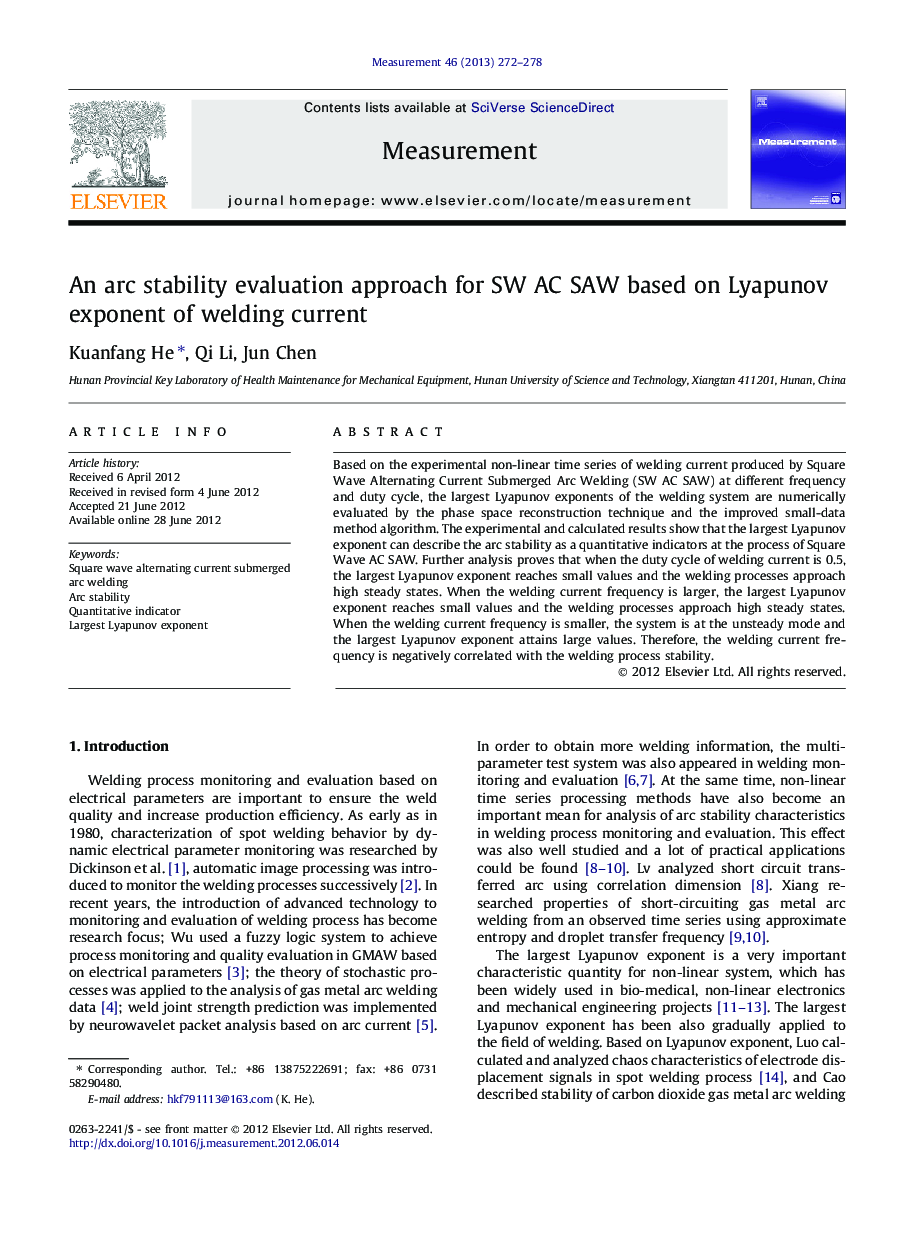| Article ID | Journal | Published Year | Pages | File Type |
|---|---|---|---|---|
| 727532 | Measurement | 2013 | 7 Pages |
Based on the experimental non-linear time series of welding current produced by Square Wave Alternating Current Submerged Arc Welding (SW AC SAW) at different frequency and duty cycle, the largest Lyapunov exponents of the welding system are numerically evaluated by the phase space reconstruction technique and the improved small-data method algorithm. The experimental and calculated results show that the largest Lyapunov exponent can describe the arc stability as a quantitative indicators at the process of Square Wave AC SAW. Further analysis proves that when the duty cycle of welding current is 0.5, the largest Lyapunov exponent reaches small values and the welding processes approach high steady states. When the welding current frequency is larger, the largest Lyapunov exponent reaches small values and the welding processes approach high steady states. When the welding current frequency is smaller, the system is at the unsteady mode and the largest Lyapunov exponent attains large values. Therefore, the welding current frequency is negatively correlated with the welding process stability.
► We propose an improved algorithm for calculation of largest Lyapunov exponents. ► We calculate the largest Lyapunov exponents of the time series of welding current. ► The calculated results indicate the Square Wave AC SAW system is in chaotic state. ► The welding process approach high steady states when current duty cycle is 0.5. ► The current frequency is negatively correlated with stability of welding process.
